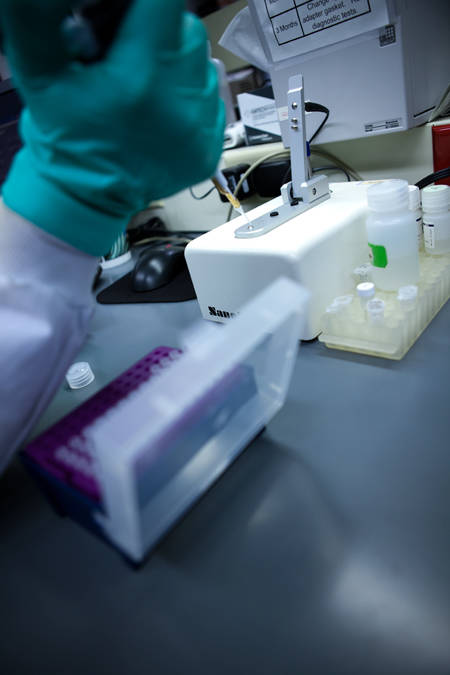As we age, it becomes more difficult to maintain good health, and we become more susceptible to diseases such as cancer, heart disease and stroke with each passing year. That fact seems so basic that it’s surprising that no one really understands the basic mechanisms underlying aging and why the aging process has such a large impact on wellbeing. And as researchers delve deeper into the subject, answers remain elusive.
A paper published October 22 in Nature Communications, “The transcriptional landscape of age in the human blood,” provides a huge amount of new aging data. The researchers leveraged new capabilities in large data set analysis to study gene expression in the blood of 14,983 people, and they found 1,497 genes that changed their expression patterns with age. JAX Assistant Professor Ron Korstanje contributed to the large collaborative effort, which found networks of associated genes for which expression increased with age, while other networks decreased.

The researchers also analyzed changes to epigenetics, chemical modifications to the DNA that don’t change the sequence. A specific epigenetic change, methylation, has been associated with aging, but they didn’t find age-associated methylation within the genes themselves. They didn’t find more methylation changes in the age-associated genes than in other genes, but they did find more changes in their enhancer and insulator regions, which help regulate the expression levels of the genes themselves. Research combining methylation and gene expression analyses therefore has the potential to identify additional aging mechanisms.
The researchers found the associated gene networks to be involved with known aging mechanisms, namely altered regulation of the protein production process (transcription and translation), increased DNA damage, altered immune function, ribosome function and mitochondrial decline leading to metabolic dysfunctions. Although the affected processes were among those expected, the study identified new genes and pathways in those areas, providing excellent starting points for further investigation. As the authors conclude: “Our list of genes should provide a rich trove of data for future aging studies.”
Additionally, the group developed an age predictor based on gene expression levels. A strongly predictive gene expression panel that can serve as an age biomarker could be used to identify people at risk for biological aging consequences at early ages and target them for intervention. Such a tool would need to be tested and validated across a variety of tissues, but it’s an interesting prospect to pursue.
http://www.nature.com/ncomms/2015/151022/ncomms9570/full/ncomms9570.html